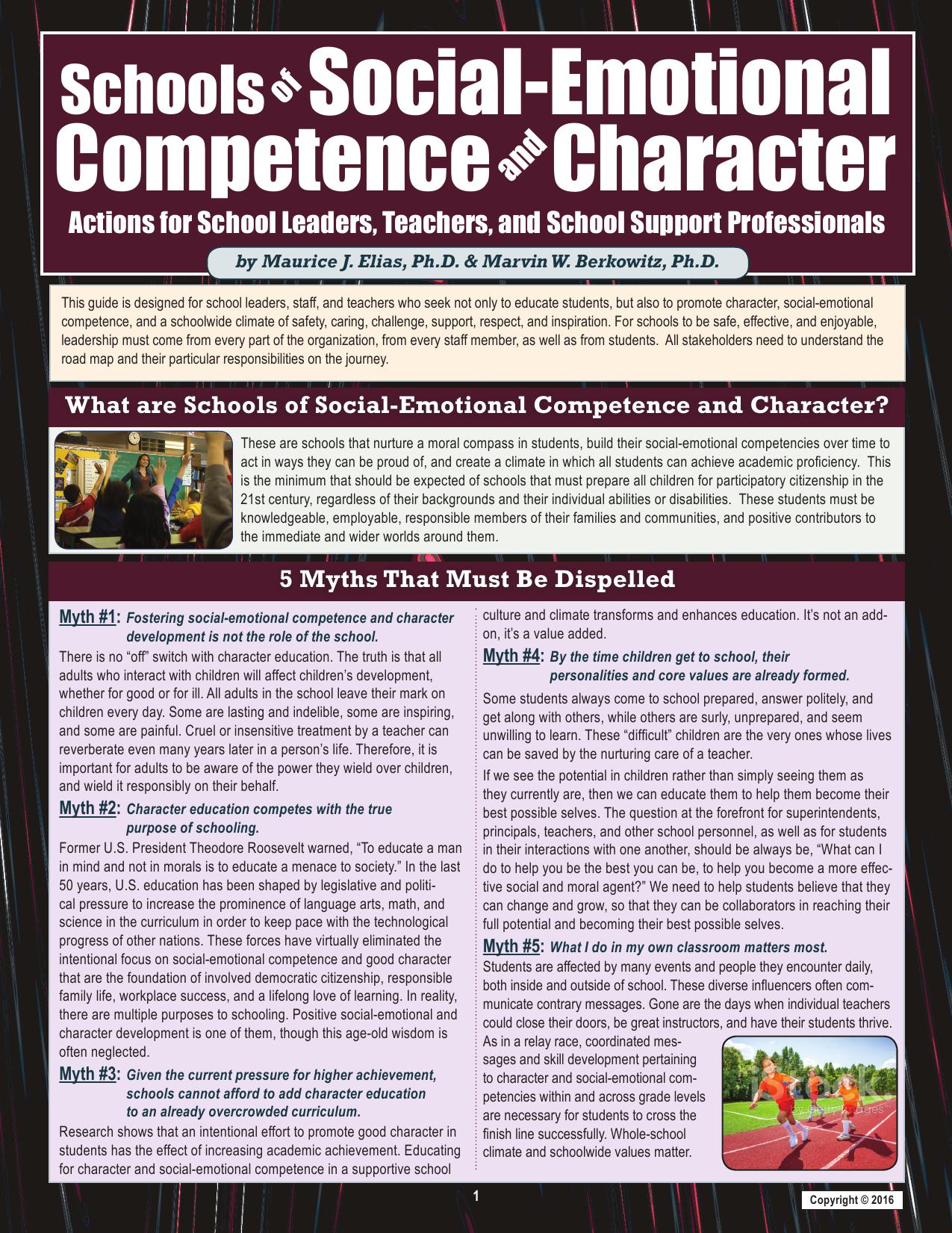Schools today need to do more than just educate students; they need to promote character, social-emotional competence, and a schoolwide climate of safety, caring, challenge, support, respect, and inspiration. The following information and tips are excerpted from the forthcoming laminated guide, Schools of Social-Emotional Competence and Character: Actions for School Leaders, Teachers, and Support Staff, by Maurice Elias and Marvin Berkowitz. This new six-page (tri-fold) laminated guide will be available for purchase on October 1, 2015.

Schools of Social-Emotional Competence and Character
5 Key Social-Emotional Competencies
- Self-awareness: Accurately assessing one’s feelings, interests, values, and strengths; maintaining a well-grounded sense of self-confidence.
- Self-management: Regulating one’s emotions to handle stress, controlling impulses,
and persevering in addressing challenges; expressing emotions appropriately; setting and monitoring progress toward personal and academic goals. - Social awareness: Being able to take the perspective of and empathize with others; recognizing and appreciating individual and group similarities and differences; recognizing and making best use of family, school, and community resources.
- Relationship skills: Establishing and maintaining healthy and rewarding relationships based on cooperation; resisting inappropriate social pressure; preventing, managing, and resolving interpersonal conflict; seeking help when needed.
- Responsible, ethical decision making: Making decisions based on consideration of ethical standards, safety concerns, appropriate social norms, respect for others, and likely consequences of various actions; applying decision-making skills to academic and social situations; contributing to the well-being of one’s school and community.
5 Action Steps Educators Can Take to Promote Character and Social-Emotional Competence:
- Emphasize social-emotional competencies and character in setting up classroom rules and norms, in language arts reading and writing assignments, and/or in social studies and current events. For example, discussing what skills characters in books use to handle interpersonal situations and the kind of character shown by people in history and current events.
- Greet and welcome students at the start of the day; use their names when you speak to them, and speak to them as you would wish people to speak to your own children or grandchildren.
- Inventory all the ways you use rewards and public recognition as motivators, and try to replace them with collaboratively created agreements on norms for behavior, private affirmations (such as positive office referrals and notes home), simple pats on the back, and collective affirmation of whole classes or the entire school
- Be the character you want to see in your students. Children focus more on what you do than what you say. They may not remember what you say but they remember how you made them feel.
- Give students and staff voice and choice in how they show what they have learned, in addressing and resolving the problems of the school, and in helping one another learn better and act with more positive character. Share power and responsibility with all stakeholders.
Learn more about how to create schools of social-emotional competence of character in Maurice Elias and Marvin Berkowitz’s new laminated reference guide for National Professional Resources, Inc.








